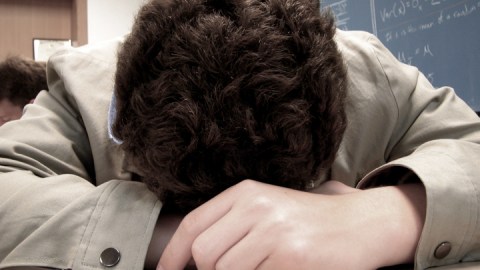A lack of sleep makes your brain eat itself, new research suggests

Weird, shape-shifting glial cells are your brain’s caretakers. They’re the first responders in the event of a head injury, and — having colonized every nook and cranny of the place while you were still in the womb — they’re your cranial custodians. These tentacled helpers clear out the junk and are vital to keeping your brain smoothly humming along. But now a new study has discovered something startling about them: they eat healthy brain cells in mice who don’t get enough shut-eye. And maybe in us, too.
The study, by Michele Bellesi, Luisa De Vivo, Mattia Chini, and Chiara Chirelli, looked at two kinds of glial cells in mice:
There were three groups of mice in the study. The first group could sleep as long as they wanted, the second group was kept awake an extra eight hours before being allowed to sleep, and the third were kept away for five days to mimic chronic sleep loss. The researchers found that both kinds of glial cells put in destructive overtime in tired mice’s brains.

Astrocyte (GERRY SHAW)
In the group of well-rested mice, astrocytes were seen to be active in about 6% of a mouse’s synapses. In mice whose sleep had been delayed, they appeared in a larger 8%. And in the profoundly sleep-deprived mice, astrocytes were active in 13.5% of the synapses, more than double the areas of activity in the well-rested mice. “We show for the first time that portions of synapses are literally eaten by astrocytes because of sleep loss,” asserts Bellesi.
Whether this is a good or bad thing is unclear. Some of the pruning was done to the largest synapses: well-used, mature connections. Bellisi suspects, “They are like old pieces of furniture, and so probably need more attention and cleaning.”

Microglia and neurons (GERRY SHAW)
More worrying is the similar increase in activity discovered in microglial cells of sleep-deprived mice. Overactive microglial cells in humans have been previously linked to a variety of brain disorders. Bellisi again: “We already know that sustained microglial activation has been observed in Alzheimer’s and other forms of neurodegeneration.” Other studies have also linked sleep deprivation to the onset of dementia, and this could be the mechanism at work.
Assuming the results in this study of mice also hold true for humans, the obvious takeaway is that we should all be careful to get the sleep we need. According to the Sleep Foundation, these are the current recommendations for how much sleep you should be getting:
Rest well!





